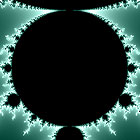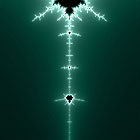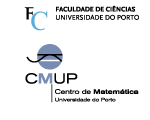 |
ProgrammeMinicoursesIntroduction to the local theory of singular holomorphic foliationsFelipe Cano (U. Valladolid)
Holomorphic vector fields and affine structures on curves Adolfo Guillot (UNAM México) A holomorphic vector field on a complex surface gives a foliation plus a privileged leafwise coordinate on it (complex time). I will talk about the affine geometry of this coordinate as a common framework to study Valdez' dictionary of billiards, Lins Neto's results on commuting vector fields, Calogero's "goldfish" many-body problem and recent results by Rebelo and myself concerning semicomplete holomorphic vector fields on surfaces. Invited Speakers Include: Absolutely dicritical foliations A germ of singular holomorphic foliation is called absolutely dicritical if there exists a finite sequence of punctual blow-ups such that the transformed foliation is completely transversal to the exceptional divisor. We will prove the existence of absolutely dicritical foliations relatively to any finite sequence of punctual blow-ups. Connexions affines holomorphes sur les surfaces complexes Nous présenterons une classification des connexions affines et projectives holomorphes sur les surfaces complexes compactes. Pour cela nous nous intéresserons aux symétries locales de ces connexions. Homotopy of codimension one foliations on real 3-manifolds We are interested in the connected components of the space of codimension one (nonsingular) foliations on a closed real 3-manifold. In 1969, J. Wood showed that any plane field on a closed 3-manifold can be deformed into the tangent plane field to a foliation. In this talk, we will present a one-parameter version of this statement: if two C 8 foliations have homotopic tangent plane fields, they can be connected by a path of C 1 foliations. Transverselly Cantor Laminations, tilings and inverse limits Transversely Cantor laminations appears naturally in the study of foliations as exceptional minimal sets, and are also releated with group actions on the Cantor set. The fist example of such object is the solenoid \[ X = \varinjlim ( S^1, z\mapsto z^2 ) \] Williams proved that expanding attractors has also that kind of structure, namely, any expanding attractor is an inverse limit where $S^1$ is replaced by a branched manifold. Later, Anderson and Putnam showed that substitution tilings are also expanding attractors, as they are inverse limits. Those results where generalised independiently by Gähler and Bellisard, Benedetti and Gambaudo to show that an analogous result is true for hulls of repetitive plane tilings. We will explore those ideas and show that these inverse limits are actually the only examples of transversely Cantor laminations. David Marín (UAB - Spain) We review some recent topological facts, obtained in collaboration with Jean-François Mattei, about singular foliations in the plane which allows us to introduce a new topological invariant of germs called monodromy. Our main result concerns the topological classification of germs of foliations satisfying weak generic condition on each equisingularity class and reads roughly as follows: Two such germs are topologically conjugated if and only if there is a special conjugation between their monodromies. As a corollary we obtain a proof of the Cerveu-Sad conjecture about the topological invariance of the projective holonomy representations. The foliated structure of the Kuranishi space of a compact complex manifold Kuranishi's famous Theorem (1962) states, roughly speaking, that the set of complex structures on a smooth compact manifold close to a given one has a structure of an analytic space. It is known thatthis Kuranishi space can have arbitrary singularities and may be non-reduced at any point. So, as an analytic space, it has no good properties. However, it has a foliated structure. After recalling the construction of the Kuranishi space, I will explain in detail the construction of this foliated structure. Then I will give some applications and open questions. Moduli spaces for topologically quasi-homogeneous functions We will discuss the moduli space of the foliation defined by a germ of holomorphic function, in the topological class which contains a quasi-homogeneous foliation, focusing on the relation between two presentations: the cohomological one, and normal forms. We will present our motivations for further developments in two directions: moduli space for germs of curves and for germs of non dicritical foliations.(Travail en commun avec Yohann Genzmer) Ergodic solenoidal geometry We consider solenoids that are compact uniquely ergodic foliated spaces with a finite dimensional transverse structure. They represent a natural generalization of classical compact manifolds. Using them we can represent geometrically real homology classes of manifolds. In this setting we can unwind Hodge conjecture into two distinct conjectures, one purely geometrical (the solenoidal Hodge conjecture) and another of arithmetical character. We can also develop and extend classical differential geometry to the category of solenoids. We will present a survey of these recent results in collaboration with Vicente Muñoz (U. Complutense). |
  |
